International Journal of Veterinary Science and Research
Does Dexmedetomidine Protect the Visceral Organs against the Asphxia
Ayse Mizrak*
Cite this as
Mizrak A (2019) Does Dexmedetomidine Protect the Visceral Organs against the Asphxia. Int J Vet Sci Res 5(1): 001-006. DOI: 10.17352/ijvsr.000033Background: This study was conducted to determine whether dexmedetomidine exhibits a protective effect against sudden and short term hypoxia on brain, heart, lung, liver, and kidney in rat model which sudden hyperglycemia and hypertension developed.
Methods: In this randomised and double blind study, the experiment was performed on 30 male Wistar Albino rats 250-300 g weight. The rats were randomly assigned into 2 groups which are control group (C, n = 15), and dexmedetomidine group (D, n = 15). All rats were made hyperglycemic by a single injection of streptozotocin (STZ) (50 mg/kg) then, adrenalin (0.03 mg/kg) was injected intraperitonealy to make sudden hypertension. Dexmedetomidine (10 µg/kg/min, total dose 2.5-3.3 µg) was infused intraperitonealy in group D, and saline to group C. They were sacrified until observing siyanosis on the feet and stopping the body movement.
Results: The incidence of liver’s congession (p=0.01) and the incidence of schistocytes (p=0.4) in group C were significantly higher than in group D. The grade of congession in group C was significantly higher than in group D (p=0.004). In group C, the mean arterial blood pressure (MAP) (p= 0.0001), heart rate (HR) (p= 0.004), and the blood glucose (p= 0.0001) values after-experiments period were significantly higher than the values before-experiments period.
Conclusions: Dexmedetomidine 10 µg/kg/min could protect the liver against the congession and lung against the severe congession but could not protect the brain, heart and kidney in hyperglycemic and hypertensive rat model.
Introduction
Asphxia causes hypoxic injury as result of cellular necrosis in human disease [1]. The redistribution of blood flow helps maintain oxygenation and nutrition of the organs, even though the oxygen content of arterial blood is very low [2]. During the hypoxia, cardiac output is normal in the early phase, however, the blood distribution to organs is altered such as blood flow to the liver, the kidney, the gut, the skin, and the muscle is reduced, whereas blood flow to the heart, the brain, the adrenal glands, and the placenta is maintained constant or increased [3,4].
Dexmedetomidine is an alpha-adrenoceptor agonist with dose dependent α2 adrenoceptor selectivity. The infusion of low to medium doses of dexmedetomidine (10 to 300 µg/kg) has high levels of α2-adrenoceptor selectivity [5]. It is also reported that alpha α2-adrenergic stimulation has beneficial effects on ischemic myocardium which is attribu to sympatholytic and heart rate decreasing effects by a central nervous system action [6,7].
There are some studies show that dexmedetomidine has a cardioprotective effect on global ischaemia on the isolated rat heart model during ischemi reperfusion study and a preconditioning effect against ischemic injury on the hippocampus [8,9]. However, Kuhmonen et al. concluded that dexmedetomidine is not neuroprotective either on the transient or permanent middle cerebral artery occlusion models of rats [10].
The pathophysiology of the focal ischemia-reperfussion has been extensively studied, but the consequences of a general hypoxia caused by the tracheal occlusion in such conditions as sudden and short term (6 hours) hypertension and hyperglicemia have not been well studied so far. Therefore we aimed to perform this study to determine whether dexmedetomidine exhibits a protective effect against hypoxia on these visceral organs on hyperglycemic and hypertensive rat model.
Methods
The study was planned and performed according to National Health and Medical Research Council Guidelines. Thirty male Wistar- Albino rats, weighting between 250 and 350 gr, were used in this experiment. All animals were handled according to the guide for the care and use of laboratory. The study was approved by the ethics committee for animal experiments committee of Gaziantep University Medical Faculty.
All the rats were made hyperglycemic by a single injection of STZ (streptozotocin, 50 mg/kg, iv; Sigma Chemical Co.St. Louis, MO, USA) 3 hours after feeding. Then, adrenalin 0.03 mg/kg injected intraperitonealy to provide hypertension. After a 45-minute waiting period, the final serum glucose concentration and non invasive blood pressure were measured. The basal levels of glucose concentration, non invasive arterial blood pressure and HR of the rats were measured by tail-cuff plethysmography method (IITC, Life Scientific Instruments, Woodland Hills, CA, USA) according to the procedure. Before the experiments were started, rats were conditioned to the procedure so that arterial pressure could be recorded consistently with minimal restraint and stress to the animal. During the entire measurement period, the temperature inside the chambers was maintained at 25 ºC.
Rats were considered hypertensive when MAP was 150 mm Hg or higher and were considered hyperglycemic when serum glucose concentrations was 300 mg/dl or greater. The rats were randomly assigned into two groups. One of the group was control (group C, n=15), the other group was dexmedetomidine (group D, n=15).
Dexmedetomidine (10 µg/kg/min, total dose 2.5-3.3 µg) was infused intraperitoneally in group D, 1 ml NaCl 0.9% in group C to provide same stress level.
After infiltrating 0.03-0.04 mg of lidocaine (Aritmal, 2%, 20mg/ml, TEMS, Turkey) into the the trachea, it was occluded with a surgical clamp completely for 45-60 seconds to make hypoxia until observing siyanosis on the feet and stopping the body movement. The incision area was closed with the sutures and then the animals were put into the feeding place. All the rats humanly sacrified as soon as being given intraperitoneal ketamin 40 mg/kg (Ketalar, flacon, 50 mg/ml) 24 h after occlusion of the trachea. Intracardiac blood sample was immediately taken for peripheral cellular examination.
The kidneys, the heart, the lung, the liver and the brain tissue cooled in ice-cold saline for 10 min then the matrix dissected and 2-mm thick coronal slices were immersed in neutral buffered 10% formalin for histopathological study. All tissues were assessed under low, medium and high power (x40, x85, x200) for necrosis and congession of the tissue.
The livers were examined for acute congestive changes (including dilatation of the central veins and areas of necrosis in the central lobular region). The extent of congession for liver was classified as 2 grades: 0= no congession, 1= existing congession. The findings in the lungs were semiquantitatively graded as follows: 1= rare congession; 2= mild congession, 3= moderate congession, 4=severe congession. The peripheral blood smears were graded as being seen schistocytes under high power field as follows; rare for 1 schistocyte per every other field, 1+ for 2–10%, 2+ for 10–20% [11].
Statistical analysis
The results of the study were evaluated using the SPSS statistical analysis package (Statistical Package for Social Sciences, Release 15.0 for Windows, Chicago, IL). Data values are summarized as mean±SD or n (%). A p level of <0.05 was considered statistically significant. Comparison of the data was performed by Mann Whitney U test between the groups or paired sample t test within each group as appropriate. For analysis involving most of the histologic values the chi-square test was performed.
Results
There was no statistically-significant difference between the groups in terms of demographic characteristics (Table 1). In group C, MAP (p= 0.0001), HR (p= 0.004), and the blood glucose (p= 0.0001) values after-experiments period were significantly higher than the values before-experiments period. In group D, the blood glucose values after-experiments period were significantly higher than the values before-experiments period (p= 0.0001, 1). There was no statistical significance between the values before-experiments period and after-experiments period regarding MAP and HR.
The incidence of brain’s necrosis and congession, myocardial necrosis and congession, kidney’s necrosis and congession, lung’s necrosis and congession and liver’s necrosis were similar in both groups. The incidence of schistocytes in group C was significantly higher than in the group D (p=0.4, figure 1) (Pictures 1,2). However, the incidence of liver congession in group D was significantly lower than in group C (p=0.01, figures 1, 2) (Pictures 3,4). Although the incidence of lung congession in group C and D were similar, the severity of congession in group C was significantly higher (p=0.004, figure 3) (Pictures 5,6).
Discussion
Dexmedetomidine 10 µg/kg/min could protect the liver against the congession and lung against the severe congession in hyperglycemic and hypertensive rat model. However, the incidence of necrosis and congession in brain, myocardium, and kidney and the necrosis in liver were similar in both groups.
Ischemic strokes are more prevalent than hemorrhagic, making up approximately 87% of all cases, and have been the target of most drug trials [12]. Within the core of the ischemic area, where blood flow is most severely restricted, excitotoxic and necrotic cell death occurs within minutes [13]. We investigated the protective effect of dexmedetomidine in hypertensive and hyperglycemic rat underwent sudden, short term, general and transient hypoxia by tracheal occlusion. Because of the anesthetic-sparing and hemodynamic-stabilizing effects, the high-risk patients who received dexmedetomidine after vascular surgery experienced significantly fewer ischemic episodes than did patients in the placebo group [14,15].
Adrenoceptor agonists blunt hemodynamic variability during surgery and recovery and may also be effective in reducing early postoperative ischemic events such as MI or uns angina [16]. Direct myocardial preservation with dexmedetomidine by lowering anti-ischemic responses [7] and stress responses [6,17] cause resistance to arrhythmia development [18] and promoting protective mechanisms during periods of hypoxia and reoxygenation were demonstrated in animal models [19]. Sudden, short term ischemic injury preferentially induces cell death via an apoptotic-like mechanism rather than necrosis [13,20] and causes an increase in oxygen free radicals, death receptor ligation, DNA damage, protease activation and ionic imbalance. In the current study, we could not observe any increase and difference between the groups in the microscopic view of the myocardial specimens. This may be due to the insufficient hypoxia time or waiting time to see the apoptosis after tracheal occlussion.
In the United States stroke is the third leading cause of death and disability. Stroke can be ischemic or hemorrhagic, involve small or large blood vessels and be exacerbated by hypotension, fever and hyperglycemia. Dexmedetomidine decreased cerebral blood flow in dogs by 30% to 45% without evidence of ischemia when used in combination with isoflurane or halothane [21]. There are very few treatments for stroke and few development of new treatments. Alpha2 -adrenoceptor agonists seem to be neuroprotective in an animal model of brain ischemia [22]. Hyperglycemia increases lactate in the ischemic environment further depressing pH [23]. We could not observe any increase and difference related to necrosis and congession between the groups in the microscopic view of the cerebral specimens. The rats did not show increased brain edema and lesion size. An embolism, thrombosis, or systemic hypo-perfusion all result in a restriction of blood flow to the brain, can cause an ischemic stroke, which results in insufficient oxygen and glucose delivery to support cellular homoestasis. Brain injury following stroke results from the complex interplay of multiple pathways including ionic imbalance, peri-infarct depolarization, excitotoxicity, acidotoxicity, inflammation and apoptosis. These events can lead to parenchymal hemorrhage, vasogenic brain edema and neutrophil infiltration into the brain [24].
In our study, the incidence of kidney’s necrosis and congession after hypoxic experiment were similar in both groups. During prolonged renal ischemia, the abnormal activation of phospholipases and proteases through cell membrane, the collapse of the ionic gradients, the impaired calcium homeostasis and a loss of membrane selective permeability play the main roles in the biochemical and morphological changes observed in the proximal tubules is accepted [25-28]. The other pathogenetic processes which contribute are: Free radical-mediated reactions appear to take in the ischemic organ and lead to oxidative damage [29]. The exposure to a short-term ischemia causes extensive cell swelling and morphological injury of rat kidney. Additionally, it is important that the initiation of membrane lipid oxidative breakdown may also take place under low O2 tension [30]. Further in vivo studies that would consider and compare different ischemic terms and different degrees of renal hypoxia are necessary. We could not observe any cell swelling and morphological injury of rat kidney in this study.
The incidence of liver’s congession in group D was significantly lower than in group C. As blockade of TNF or MIP-2 reduced inflammatory reaction and decreased the extent of hepatic injury, dexmedetomidine may have prevented inflammatory response and hepatic injury by reducing both the increased TNF and MIP-2. Neutrophils are capable of producing oxidative stress and may contribute to the development of microvascular dysfunctions and edema formation [31]. Intensive investigations will be necessary to evaluate the benefits of these strategies in experimental models of hepatic ischemia in the clinical practice.
Although the incidence of lung congession in group C and D were similar, the grade of congession in group C was significantly higher than in group D. Lung damage appears to center around the TNF, since the administration of anti-TNF antibodies resulted in biochemical parameters of lung damage and histological results similar to those observed in the control group. The injurious effects of TNF could be mediated by an increase in P-selectin expression [32]. The pulmonary ischemic changes observed in dogs after bronchial artery ligation appear similar to those observed by Blaisdell in patients dying from lung shock. Pulmonary edema following shock has been explained by temporary underperfusion of the lungs, which involves the entire bronchial blood supply. Shock and pulmonary edema are frequently related [33].
After documentation of the scoring of schistocytes in peripheral blood smears, we observed that the number and the grade of the schistocytes in group C were significantly higher than that in group D. The characteristic fragmented red cells or schistocytes are commonly thought to be formed when red blood cells pass through partially occluded vessels, experiencing shear stress as they encounter platelet thrombi in the microvasculature [11]. While schistocytes are a hallmark for thrombotic thrombocytopenic purpura/hemolytic uremic syndrome (TTP/HUS), they are also encountered in a variety of other clinical settings. These include severe hypertension, DIC, preeclampsia/eclampsia, HELLP syndrome, fatty liver of pregnancy, mechanical trauma (e.g., artificial heart valves), and even in normal patients [34-36]. In the current study, other possible causes of fulminant hemolysis must be considered in this patient. The lack of schistocytes makes micro-angiopathic processes such as TTP or disseminated intravascular coagulation less likely.
Dexmedetomidine at clinically relevant concentrations did not influence chemotaxis, phagocytosis, or O2-free radical production by neutrophils. Sezer at al. reported that dexmedetomidine has a protective effect on liver tissues during experimental sepsis in the rat.
In conclusion, dexmedetomidine 10 µg/kg/min could protect the liver against the congession and lung against the severe congession in hyperglycemic and hypertensive rat model. New studies need to be developed to investigate the benefits of dexmedetomidine.
- Nielsen VG, McCammon AT, Tan S, Kirk KA, Samuelson PN, et al. (1995) Xanthine oxidase inactivation attenuates postocclusion shock after descending thoracic aorta occlusion and reperfusion in rabbits. J Thorac Cardiovasc Surg 110: 715-22. Link: https://goo.gl/DuPs9T
- Boyle DW, Hirst K, Zerbe GO, Meschia G, Wilkening RB (1990) Fetal hind limb oxygen consumption and blood flow during acute graded hypoxia. Pediatr Res 28: 94-100. Link: https://goo.gl/kChHCn
- Behrman RE, Lees MH, Peterson EN, De Lannoy CW, Seeds AE (1970) Distribution of the circulation in the normal and asphyxiated fetal primate. Am J Obstet Gynecol 108: 956-969. Link: https://goo.gl/U5ujH4
- Yarnell R, Biehl DR, Tweed WA, Gregory GA, Sitar D (1983) The effect of halothane anaesthesia on the asphyxiated foetal lamb in utero. Can Anaesth Soc J 30: 474-479. Link: https://goo.gl/jat3KX
- Virtanen R, Savola JM, Saano V, Nyman L (1988) Characterization of the selectivity, specificity and potency of medetomidine as an alpha 2-adrenoceptor agonist. Eur J Pharmacol 150: 9-14. Link: https://goo.gl/zqfGVv
- Roekaerts PM, Prinzen FW, de Lange S (1996) Coronary vascular effects of dexmedetomidine during reactive hyperemia in the anesthetized dog. J Cardiothorac Vasc Anesth 10: 619-626. Link: https://goo.gl/WJjeeT
- Willigers HM, Prinzen FW, Roekaerts PM, de Lange S, Durieux ME (2003) Dexmedetomidine decreases perioperative myocardial lactate release in dogs. Anesth Analg 96: 657-664. Link: https://goo.gl/9Y5jJ2
- Okada H, Kurita T, Mochizuki T, Morita K, Sato S (2007) The cardioprotective effect of dexmedetomidine on global ischaemia in isolated rat hearts. Resuscitation 74: 538-545. Link: https://goo.gl/irjoN6
- Dahmani S, Rouelle D, Gressens P, Mantz J (2005) Effects of dexmedetomidine on hippocampal focal adhesion kinase tyrosine phosphorylation in physiologic and ischemic conditions. Anesthesiology 103: 969-977. Link: https://goo.gl/ZCLv1e
- Kuhmonen J, Haapalinna A, Sivenius J (2001) Effects of dexmedetomidine after transient and permanent occlusion of the middle cerebral artery in the rat. J Neural Transm 108: 261-271. Link: https://goo.gl/qDoq3q
- Egan JA, Hay SN, Brecher ME (2004) Frequency and significance of schistocytes in TTP/HUS patients at the discontinuation of plasma exchange therapy. J Clin Apher 19: 165-167. Link: https://goo.gl/aDG1ee
- Rosamond W, Flegal K, Friday G, Furie K, Go A, et al. (2007) Heart disease and stroke statistics--2007 update: a report from the American Heart Association Statistics Committee and Stroke Statistics Subcommittee. Circulation 115: e69-171. Link: https://goo.gl/D4f7DZ
- Gonzalez RG (2006) Imaging-guided acute ischemic stroke therapy: From "time is brain" to "physiology is brain". AJNR Am J Neuroradiol 27: 728-735. Link: https://goo.gl/J2JuVF
- Talke P, Li J, Jain U, Leung J, Drasner K, et al. (1995) Hollenberg M, Mangano DT: Effects of perioperative dexmedetomidine infusion in patients undergoing vascular surgery. The Study of Perioperative Ischemia Research Group. Anesthesiology 82: 620-633. Link: https://goo.gl/YNhD3R
- Talke P, Chen R, Thomas B, Aggarwall A, Gottlieb A, et al. (2000) The hemodynamic and adrenergic effects of perioperative dexmedetomidine infusion after vascular surgery. Anesth Analg 90: 834-839. Link: https://goo.gl/XV4dfT
- Mangano DT, Browner WS, Hollenberg M, Li J, Tateo IM (1992) Long-term cardiac prognosis following noncardiac surgery. The Study of Perioperative Ischemia Research Group. Jama 268: 233-239. Link: https://goo.gl/Dn2Lyd
- Roekaerts PM, Prinzen FW, De Lange S (1996) Beneficial effects of dexmedetomidine on ischaemic myocardium of anaesthetized dogs. Br J Anaesth 77: 427-429. Link: https://goo.gl/Q4Upyj
- Kamibayashi T, Mammoto T, Hayashi Y, Yamatodani A, Takada K, et al. (1995) Further characterization of the receptor mechanism involved in the antidysrhythmic effect of dexmedetomidine on halothane/epinephrine dysrhythmias in dogs. Anesthesiology 83: 1082-1089. Link: https://goo.gl/JWbKTz
- Guo H, Takahashi S, Cho S, Hara T, Tomiyasu S, et al. (2005) The effects of dexmedetomidine on left ventricular function during hypoxia and reoxygenation in isolated rat hearts. Anesth Analg 100: 629-635. Link: https://goo.gl/HpnY3g
- Kerr A Jr, Diasio RB, Bommer WJ (1965) Effect of Altitude (Hypoxia) on Coronary Artery Size in the White Rat. Am Heart J 69: 841.
- Zornow MH, Maze M, Dyck JB, Shafer SL (1993) Dexmedetomidine decreases cerebral blood flow velocity in humans. J Cereb Blood Flow Metab 13: 350-353. Link: https://goo.gl/Wu2XEN
- Hoffman WE, Kochs E, Werner C, Thomas C, Albrecht RF (1991) Dexmedetomidine improves neurologic outcome from incomplete ischemia in the rat. Reversal by the alpha 2-adrenergic antagonist atipamezole. Anesthesiology 75: 328-332. Link: https://goo.gl/QyyrzB
- Simon RP (2006) Acidotoxicity trumps excitotoxicity in ischemic brain. Arch Neurol 63: 1368-1371. Link: https://goo.gl/EqsYki
- Crack PJ, Taylor JM (2005) Reactive oxygen species and the modulation of stroke. Free Radic Biol Med 38: 1433-1444. Link: https://goo.gl/DyxczP
- Venkatachalam MA, Bernard DB, Donohoe JF, Levinsky NG (1978) Ischemic damage and repair in the rat proximal tubule: differences among the S1, S2, and S3 segments. Kidney Int 14: 31-49. Link: https://goo.gl/WGMNVk
- Venkatachalam MA, Jones DB, Rennke HG, Sandstrom D, Patel Y (1981) Mechanism of proximal tubule brush border loss and regeneration following mild renal ischemia. Lab Invest 45: 355-365. Link: https://goo.gl/FZP8NZ
- Snowdowne KW, Freudenrich CC, Borle AB (1985) The effects of anoxia on cytosolic free calcium, calcium fluxes, and cellular ATP levels in cultured kidney cells. J Biol Chem 260: 11619-11626. Link: https://goo.gl/jQ5DfD
- Weinberg JM (1991) The cell biology of ischemic renal injury. Kidney Int 39: 476-500. Link: https://goo.gl/6D7nef
- Scaduto RC, Gattone VH, Grotyohann LW, Wertz J, Martin LF (1988) Effect of an altered glutathione content on renal ischemic injury. Am J Physiol 255: F911-921. Link: https://goo.gl/7r34GY
- Capraro MA, Hughey RP (1985) Use of acivicin in the determination of rate constants for turnover of rat renal gamma-glutamyltranspeptidase. J Biol Chem 260: 3408-3412. Link: https://goo.gl/frLnMU
- Suzuki S, Toledo-Pereyra LH, Rodriguez FJ, Cejalvo D (1993) Neutrophil infiltration as an important factor in liver ischemia and reperfusion injury. Modulating effects of FK506 and cyclosporine. Transplantation 55: 1265-1272. Link: https://goo.gl/Uv7HRt
- Peralta C, Perales JC, Bartrons R, Mitchell C, Gilgenkrantz H, et al. (2002) The combination of ischemic preconditioning and liver Bcl-2 overexpression is a sui strategy to prevent liver and lung damage after hepatic ischemia-reperfusion. Am J Pathol 160: 2111-2122. Link: https://goo.gl/1Kk4yD
- Okies JE, Pircher FJ, Guinn GA (1972) Pulmonary alterations in the acutely injured patient. Ann Thorac Surg 13: 420-426. Link: https://goo.gl/MZRVBX
- Hartz JW, Buss DH, White DR, Bond MG, Scharyj M (1984) Marked elliptocytosis and schistocytosis in hematopoietic dysplasia. Am J Clin Pathol 82: 354-359. Link: https://goo.gl/qKeSu5
- Stubbs TM, Lazarchick J, Horger EO, Loadholt CB (1987) Schistocytosis, aminotransferase elevation and thrombocytopenia in preeclampsia/eclampsia. J Reprod Med 32: 777-779. Link: https://goo.gl/EPwRR5
- Cunningham FG, Lowe T, Guss S, Mason R (1985) Erythrocyte morphology in women with severe preeclampsia and eclampsia. Preliminary observations with scanning electron microscopy. Am J Obstet Gynecol 153: 358-363. Link: https://goo.gl/dobhKT
Article Alerts
Subscribe to our articles alerts and stay tuned.
 This work is licensed under a Creative Commons Attribution 4.0 International License.
This work is licensed under a Creative Commons Attribution 4.0 International License.
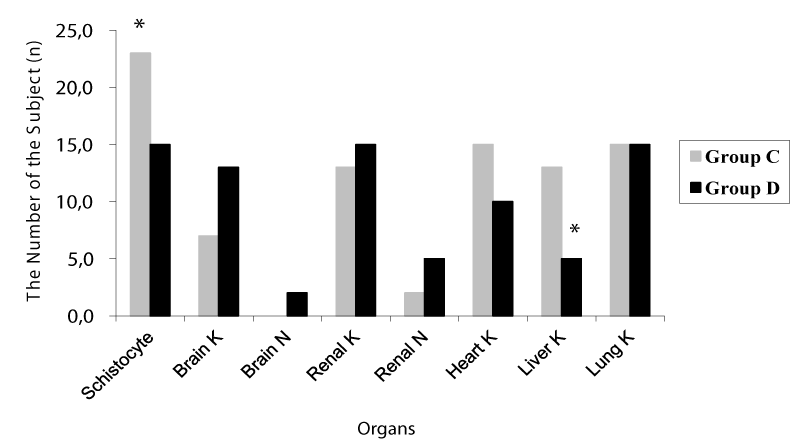
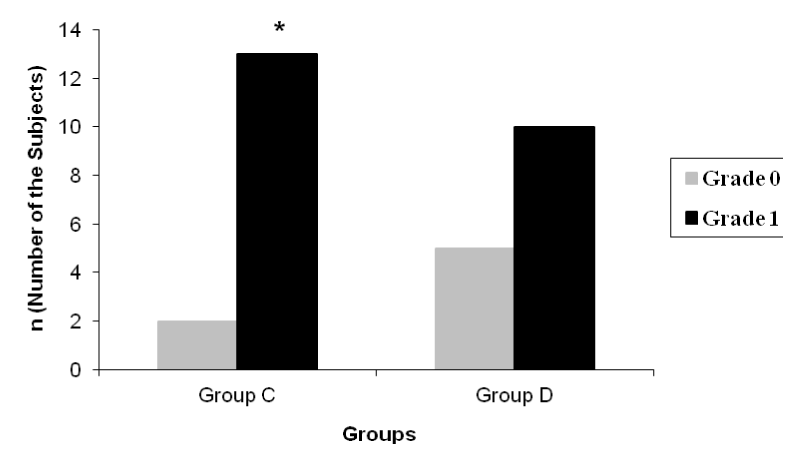

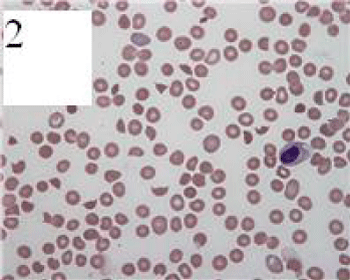
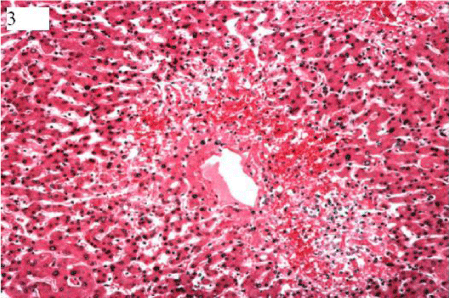

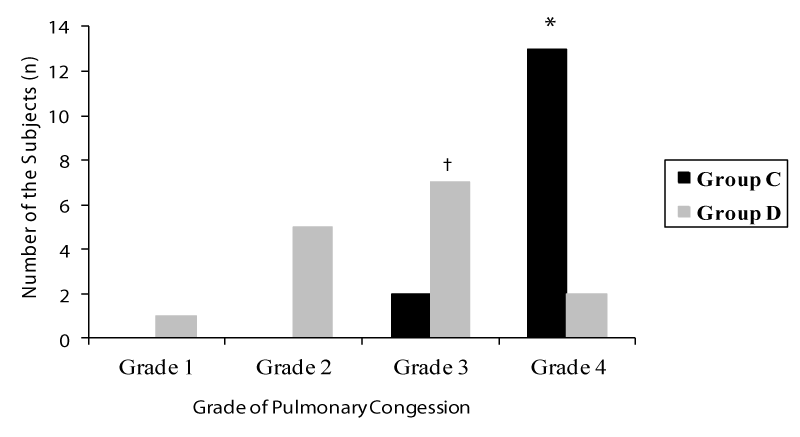
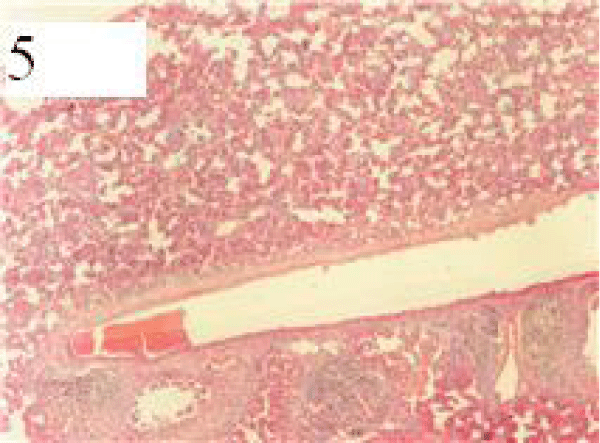


 Save to Mendeley
Save to Mendeley
